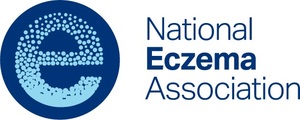The National Eczema Association (NEA) Mobilizes Stakeholders To Expose The "Real" Eczema, A Life-Altering Skin Disease Affecting Over 31 Million Americans
NEA will conduct a series of educational, patient support, and community engagement activities during October's Eczema Awareness Month
NOVATO, Calif., Oct. 1, 2019 /PRNewswire/ -- Far more than just a rash, eczema is a serious, inflammatory skin disease that impacts the quality of life of 31.6 million people in the U.S. (10.1% of the population),1, 2 reports the National Eczema Association (NEA) in connection with October's Eczema Awareness Month. This year's awareness efforts focus on unhiding the realities of eczema with NEA's #TheRealEczema campaign.
Eczema affects all races, ages, and skin types, and refers to a group of non-contagious acute and chronic conditions that cause the skin to become red, itchy, and inflamed. With a disease burden that can encompass various debilitating and painful physical, mental and emotional symptoms, eczema has the highest effect on disability-associated life years for patients with skin diseases worldwide.3
Learn more by watching "The Real Eczema," a short NEA video featuring dermatologists Peter Lio, MD, and Smita Aggarwal, MD; allergist Anna Fishbein, MD, NEA Director of Research Wendy Smith Begolka, MBS, along with eczema patients and a parent of a child with eczema.
Fast Facts about Eczema
- Comorbidities associated with eczema include: anxiety, depression, attention-deficit hyperactivity disorder (ADHD), asthma, hay fever, and other serious conditions in children and/or adults. 4, 5, 6, 7
- Children and adolescents with atopic dermatitis (AD), the most common form of eczema, are two to six times more likely to have depression, anxiety or conduct disorder than children without AD. 4, 5
- In AD patients, the negative impact on mental health ranks greater than that for patients with heart disease, diabetes, and high blood pressure. 8
- Overall in the U.S., nearly 5.9 million workdays annually are lost due to eczema. 9
- The annual economic burden of eczema, including direct medical costs, indirect costs from lost productivity, and quality of life impacts, is conservatively estimated at $5.3 billion. 10
- Learn more eczema facts: https://nationaleczema.org/research/eczema-facts/
Within the context of these powerful statistics, NEA experts agree that this is a promising time in the eczema space.
"We are excited about the revolution in understanding eczema's impact on affected individuals and families and in our new therapies recently approved and in development. We are working to minimize eczema in each and every patient—minimizing the rashes, the itch, the sleep disturbance, and its secondary effects," comments Lawrence Eichenfield, MD, Chief of Pediatric and Adolescent Dermatology at Rady Children's Hospital-San Diego, Professor of Pediatrics and Medicine (Dermatology) at the University of California, San Diego (UCSD) School of Medicine, and member of NEA's Scientific Advisory Committee.
"Thankfully, we're in an unprecedented era of scientific research, evolving knowledge, and new drugs in the pipeline, contributing to great hope for the future in terms of innovative treatments and ideally, one day, a cure," comments Julie Block, NEA President and CEO.
NEA's 2019 Eczema Awareness Month is supported in part by the following sponsors: Sanofi Genzyme/Regeneron; AbbVie; Dermira; Eli Lilly; Dermavant, and LEO Pharma.
About the National Eczema Association (NEA)
The National Eczema Association (NEA) is a non-profit 501(c) (3) patient advocacy organization whose mission is to improve the health and quality of life for individuals with eczema through research, support, and education. NEA was founded in 1988 by patients, medical professionals, and parents to help individuals and families living with eczema. www.nationaleczema.org
Media Contact: [email protected]
800-818-7546 or 415-499-3474 (ext.1025 for either)
References
- Hanifin JM, Reed ML, Eczema Prevalence and Impact Working Group. A population-based survey of eczema prevalence in the United States. Dermatitis. 2007;18(2):82-91.
- Silverberg JI, Hanifin JM. Adult eczema prevalence and associations with asthma and other health and demographic factors: a US population-based study. J Allergy Clin Immunol. 2013;132(5):1132-1138.
- Karimkhani C, Dellavalle RP, Coffeng LE, et al. Global Skin Disease Morbidity and Mortality: An Update From the Global Burden of Disease Study 2013. JAMA Dermatol. 2017;153(5):406-412.
- Yaghmaie P, Koudelka CW, Simpson EL. Mental health comorbidity in patients with atopic dermatitis. J Allergy Clin Immunol. 2013;131(2):428-433.
- Garg N, Silverberg JI. Association between childhood allergic disease, psychological comorbidity, and injury requiring medical attention. Ann Allergy Asthma Immunol. 2014;112(6): 525-532.
- Barnetson RS, Rogers M. Childhood atopic eczema. BMJ. 2002;324(7350):1376-1379.
- Spergel JM. Epidemiology of atopic dermatitis and atopic march in children. Immunol Allergy Clin North Am. 2010;30(3):269-280.
- Silverberg JI, Gelfand JM, Margolis DJ, et al. Patient burden and quality of life in atopic dermatitis in US adults: A population-based cross-sectional study. Ann Allergy Asthma Immunol. 2018;121(3):340-347.
- Silverberg JI. Health Care Utilization, Patient Costs, and Access to Care in US Adults With Eczema: A Population-Based Study. JAMA Dermatol. 2015;151(7):743-752.
- Drucker AM, Wang AR, Li WQ, Sevetson E, Block JK, Qureshi AA. The Burden of Atopic Dermatitis: Summary of a Report for the National Eczema Association. J Invest Dermatol. 2017;137(1):26-30.
SOURCE National Eczema Association

Related Links
WANT YOUR COMPANY'S NEWS FEATURED ON PRNEWSWIRE.COM?
Newsrooms &
Influencers
Digital Media
Outlets
Journalists
Opted In





Share this article